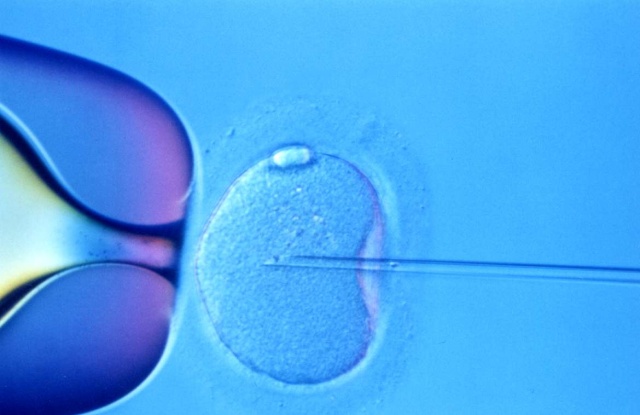
For several weeks, rumors have been circulating that a research group in China had performed the first targeted editing of DNA in human embryos. Today, the rumors were confirmed by the appearance of a paper in the journal Protein & Cell, describing genome editing performed at Sun Yat-sen University in Guangzhou, China. The paper shows that while the technique can work, it doesn't work very efficiently, suggesting there are a lot of hurdles between existing techniques and widespread genetic engineering of humanity.
To avoid potential ethical issues, the researchers performed their experiments with embryos that had been fertilized by more than one sperm. While these are regular occurrences in in vitro fertilization procedures, the embryos are inviable and normally discarded. This prevented any chance that an edited embryo could somehow produce a viable, adult human.
The work relied on the CRISPR-Cas9 system. This allows the researchers to inject DNA that encodes an enzyme and targeting RNA into a cell, which then cuts a specific DNA sequence (see the sidebar for details). The cut then typically gets repaired using DNA that looks similar. If researchers supply engineered DNA with regions of similarity at the same time as the enzyme, then the edited DNA can be used for repair, integrating it into the genome.
This has worked in a variety of systems, and the authors confirmed that it works with their gene of choice: the hemoglobin component β-globin. When using a human cell line that grows in culture, they were able to edit the gene for β-globin with a reasonable efficiency. And, just as importantly, there was no indication of off-target editing, where the engineered sequence gets inserted elsewhere in the genome. This is especially problematic with the β-globin gene, because the human genome carries several versions of this gene. In the cell line, only the intended gene was edited by the targeting RNA, and the efficiency of the editing was roughly 50 percent.
(A second targeting RNA led to some off-target work and wasn't used for other experiments.)
With everything in place, the authors switched to the fertilized embryos. And here, the results weren't quite as good. While half of the embryos showed signs of the β-globin gene having been targeted, only 14 percent were edited using the engineered DNA provided by the researchers; the rest showed various errors. Nearly double that figure had been repaired using a different β-globin gene.
The edited embryos were also mosaics, meaning they carried a mix of edited and unedited cells. There was also indication of off-target editing. The authors found a few cases by searching the two percent of the genome that encodes proteins; expanding the search to the entire genome would undoubtedly reveal more instances.
So, just about nothing works as well in embryos as it does in the cell line—or even stem cells, based on other reports in the literature. This isn't a huge shock, as pre-fertilization eggs and embryos need to manage their DNA in very different ways from other cells. But it is a bit of a surprise; preliminary work in experimental systems had suggested that the CRISPR-Cas9 system was highly effective just about everywhere we'd used it. So, there was definitely the expectation that editing DNA in human embryos would be a straightforward extension of things that have worked elsewhere.
This paper definitely signals that we'll have to proceed with caution should we choose to deploy this system in human embryos. Which is probably not a terrible thing, as there are a lot of people who feel we need to sort out the ethical implications of this technology before deploying it.
Protein & Cell, 2015. DOI: 10.1007/s13238-015-0153-5 (About DOIs).
The paper is open access.
reader comments
150